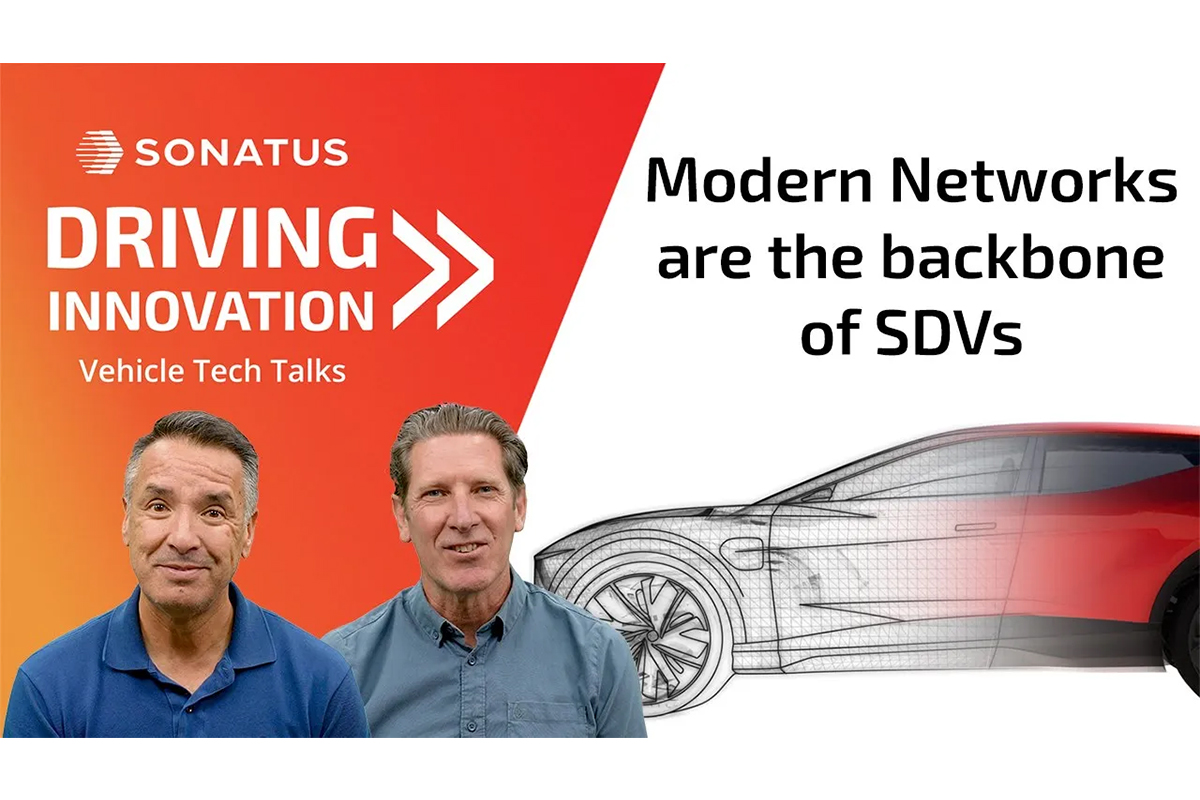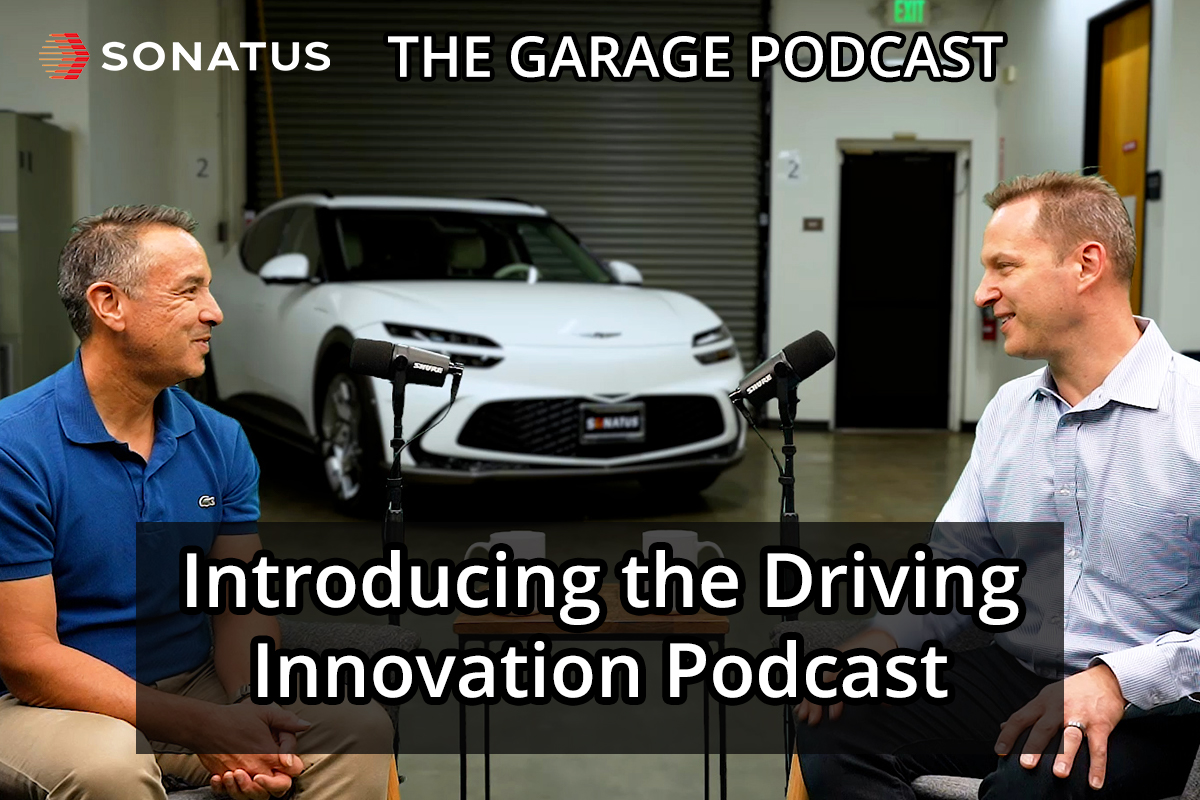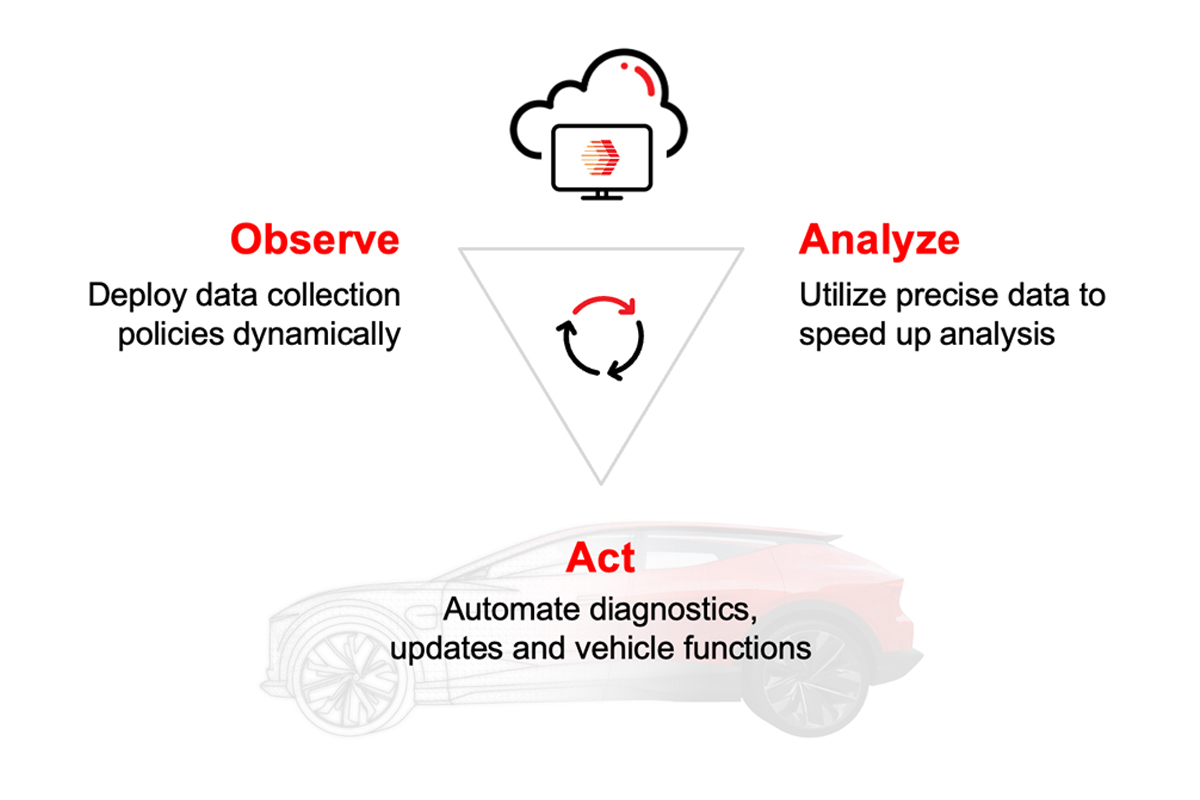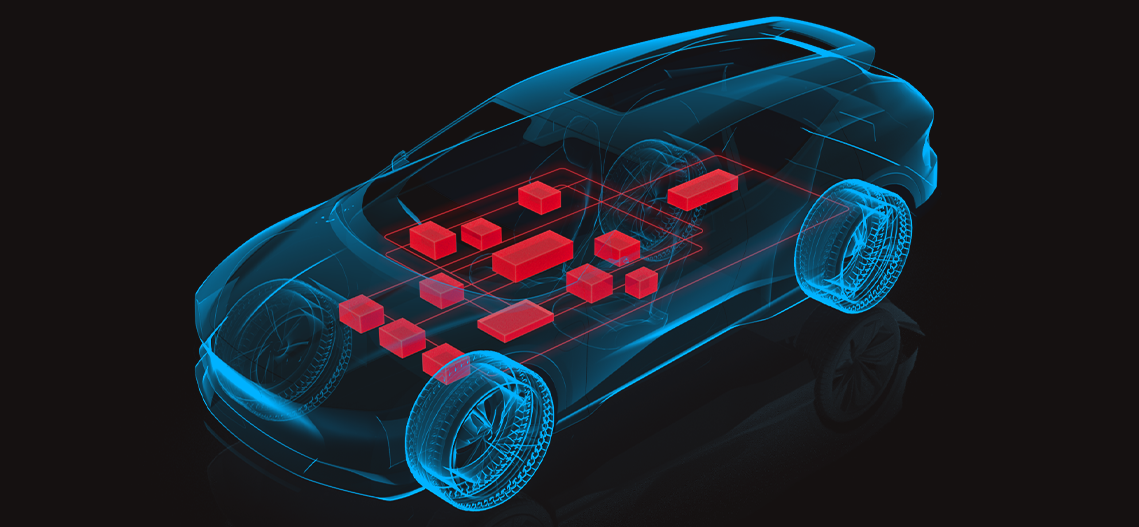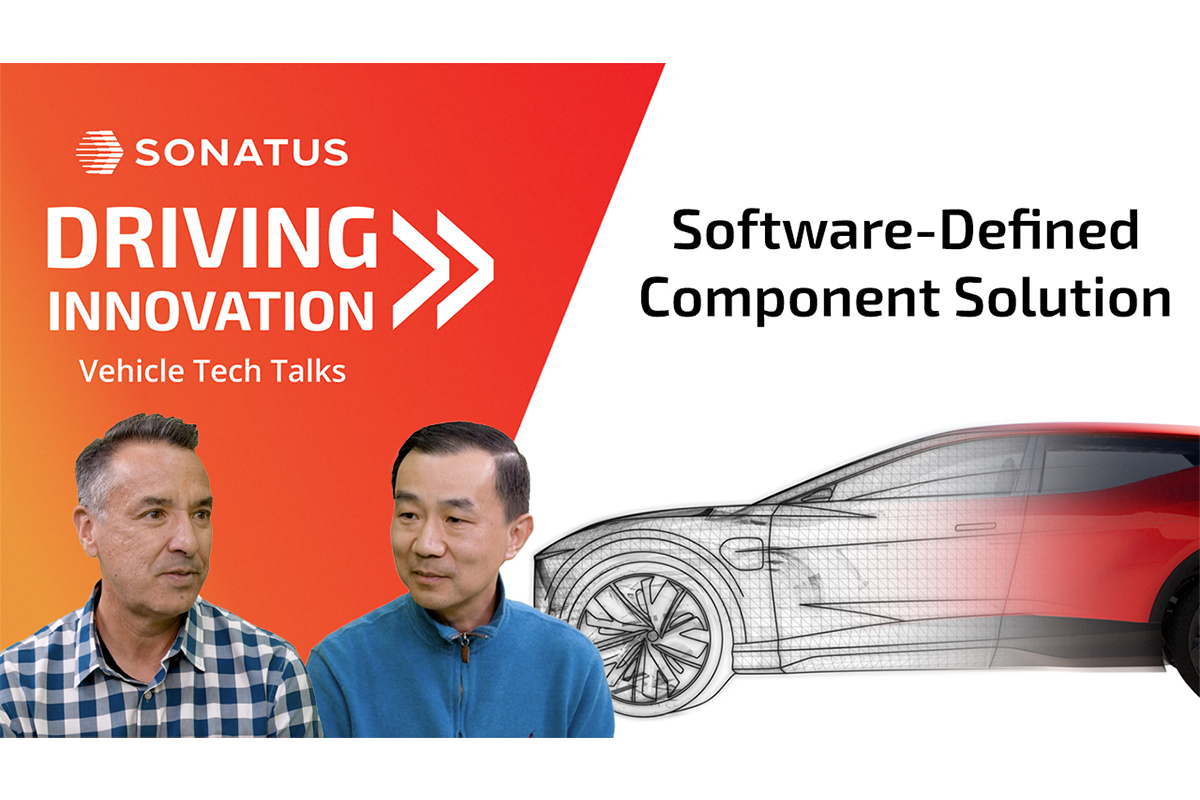Introduction
SANJAY: Welcome to a new episode of Driving Innovation, the podcast series from Sonatus, where we dig into technologies and solutions that are accelerating the transition toward software-defined vehicles. My name is Sanjay Khatri. In this episode, we will be talking about our recently announced Software-Defined Components Solution.
What is SDC
SANJAY: The idea of software-defined vehicles, where vehicles continuously get improved and enhanced, has been around for the last few years. But much of that has been confined to a few units in the vehicle, like the ADAS units or the IVI unit, which leaves much of the other parts of the vehicle unable to get that same type of improvements and enhancements. That’s where the Software-Defined Components Solution comes in.
Overview of SDC
SANJAY: To explain how this solution works, I’d like to turn to Yu Fang, CTO and Co-founder of Sonatus. Yu Fang, welcome to the episode.
YU: Thank you. Glad to be here.
SANJAY: So can you give me an overview of the SDC solution?
YU: Yes, absolutely. So, a vehicle is a holistic system that consists of many components, and when we say components, it can be any hardware component, like ECUs, but it also can be a software component like an application or even AI model, right? So any of those components can be continuously monitored while they are being operated in the real world. And based on the information that we can gather about this component, we can apply continuous improvements, and tuning, and optimization to those components while they’re running. So that’s what we mean to be software-defined components.
Real-world Data Collection
SANJAY: Sure. So you mentioned collecting real-world data. I mean, we know that OEMs are collecting a lot of data. What is different about the way you’re describing the sort of real-time or real-world data collection?
YU: Yeah, that’s right. So yes, of course, all the Tier-1s and OEMs are doing a tremendous amount of testing before the vehicles ship, right? However, we still know, in terms of the testing of different types of real driving situations, you can never cover all of them. So, therefore, it is very important to be able to get information from the vehicle about certain components while they are running in the real world, and while having a real driver using them for their daily life. So that information is extremely important to help you to understand the real performance of a component.
Optimizing Components
SANJAY: Got it. So this is not just data collected on the test track, but this is actual people, you know, ordinary people driving in different driving conditions in different places. So that’s great. So then what happens next, once you’ve done that real-world data collection?
YU: Right. So today’s vehicle has many components that are becoming more and more sophisticated. And that means those components, there are many ways that you can optimize them so that they can work well, in certain particular situations, for example, when the temperature is high, or temperature is low, or when you’re driving uphill versus downhill, and so on and so forth. So having the kind of capability to be able to optimize the component in real-time based on your specific driving condition is also very important.
Driving Conditions
SANJAY: Let me pick up on what you just said. You mentioned adapting to different driving conditions and optimizing for different driving conditions. What are some examples of that?
YU: Yeah, there are many such examples. So for example, every vehicle nowadays has traction control. However, you may need to tune your traction control based on your specific road that you’re driving on, based on the weather condition that you’re driving within, and maybe some other factors, such as the speed you’re in, and so on and so forth. Right? So that’s one example. So another example is nowadays every vehicle is equipped with many cameras. And for anyone who has operated a camera, you will know that in order to take the best picture, you would have to take into account the lighting condition around you, whether it’s day or night, and many other factors. So therefore, depending on whether you’re driving directly towards the sun, or back away from the sun, or whether it’s early in the morning, or late in the afternoon, you may want to dynamically tune your camera so that you get the best picture for your AI model.
Feedback Loop
SANJAY: If you like what you’ve seen and heard so far, click the like and subscribe button so you can get more of this type of content. You’ve just given us some great examples. How does the Software-Defined Components Solution that we’re announcing achieve this?
YU: So the key here is to be able to create a feedback loop, and it will start with being able to collect data about any particular component in your vehicle in real driving conditions, then be able to collect all this information across a fleet of vehicles. Having this data available in the cloud, where you can run your sophisticated data analytics, algorithms, and machine learning algorithms, so that you can derive insight from this information. And then once you know what you can do in order to optimize the performance of the component, then be able to very quickly make that fine tuning in whatever vehicle that you want to apply it to.
SANJAY: This feedback loop sounds very interesting. You talked about collecting the data, doing the analysis, and then applying it into the vehicle. Is that similar to what the OEMs are doing with an OTA solution right now?
YU: Not exactly. First, you will need a tool like Sonatus Collector, to be able to target any particular component based on specific driving conditions that you’re in and be able to collect the information based on specific events that happen. Once you have that information from a whole range of vehicles, then you can extract the kind of optimization that you can perform under a range of driving conditions. And then once you have that information, then you want to be able to encapsulate that into a very lightweight policy, like what our Sonatus Automator supports—be able to deploy that policy to any vehicle you want, and then afterwards, Sonatus Automator will basically be able to apply the best optimization based on the specific driving condition that you are in.
Conclusion
SANJAY: You just described a way to not only intelligently collect the data, but also allow the vehicle to have the intelligence to apply optimized tuning parameters as and when needed based on the driving conditions. That sounds like a very, very interesting solution. Is this something that is going to be available in the near future or the far future?
YU: Yes. Today, Sonatus is working with many partners to bring this to the real world. We are showcasing some of the specific use cases. One is around motor optimization. Another one is around lighting optimization in the CES. But we are working with other partners as well to bring more and more use cases to the market.
SANJAY: Well, this has been a fascinating conversation Yu Fang. I want to thank you for stopping in on the Driving Innovation podcast.
YU: Thank you, Sanjay, for the conversation. It’s been a pleasure.
SANJAY: Well, that wraps it up for this episode of Driving Innovation. Stay tuned for more episodes, where we’ll dig into other topics around the transition towards software-defined vehicles.
